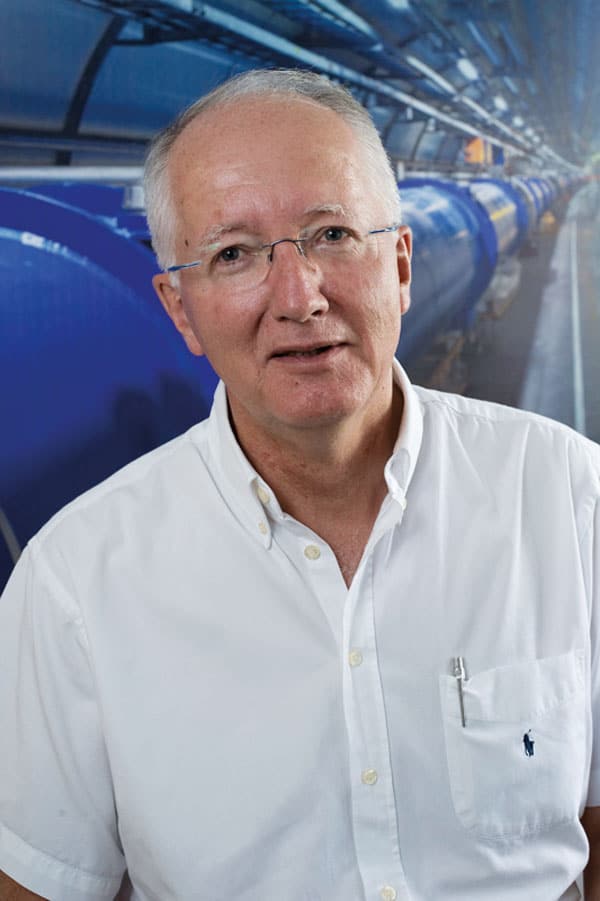The European Physical Society has been a voice for physicists in the continent for 50 years. Rüdiger Voss, its current president, talks to Matin Durrani about the challenges ahead

What has been the biggest achievement since the European Physical Society (EPS) was founded?
The EPS has succeeded in building and supporting a scientific community of universal stature, federating nearly all European countries. Today, we count among our members 42 national physical societies – and all disciplines of physics.
How significant was it that five Communist nations – including the Soviet Union – were founding members back in 1968?
It was very significant. The EPS was the first learned society that brought together scientific societies and individual scientists from both sides of the Iron Curtain. This was an early and powerful demonstration of the potential of scientific collaboration to bridge political divides and cultural barriers.
With the political divisions of the Cold War long gone, what do you see as the main role for the EPS today?
The Cold War is history, but 30 years later, Europe is still not a level playing field in scientific education, research opportunities, funding and access to infrastructure. More subtle political divides persist and new ones are opening up – for example the UK leaving the European Union (EU). The EPS has an important role to play in preserving the cohesion of the European physics community.
The Cold War is history, but 30 years later, Europe is still not a level playing field in scientific education, research opportunities, funding and access to infrastructure
How does the EPS help EU-funded efforts?
The EPS has started late in developing a science-policy profile, but we are beginning to be recognized by both the European Parliament and the European Commission as the voice of European physicists. Our action is driven by scientific arguments and scientific expertise across all fields of physics, not by individual groups or national interest, and this gives us strong credibility.
How do you think Brexit will affect physics in Europe?
The UK and the rest of Europe have drawn huge benefits from scientific collaboration in the past, both in and outside EU Framework programmes. I sense a strong determination and a lot of goodwill on both sides of the English Channel to preserve this culture of exchange. Of course, it is desirable that the UK can remain attached to future Framework programmes, similar to the schemes that have worked successfully for other non-EU countries such as Norway or Switzerland in the past. History has shown that collaboration in physics can bridge much deeper gaps than the one that will open up after Brexit.
What would you say to those who argue that the EU has too much influence on European research?
We should keep in mind that EU research funding corresponds to only a few per cent of total European R&D expenditure. Nonetheless, it has produced substantial benefits and has served physics in Europe well. The success of past Framework programmes, their wide visibility and the stiff competition mean that EU visions and priorities tend to strongly influence national policies. Also, there is a risk that EU funding is perceived as a replacement for, not a complement to, national R&D funding. We must watch that Framework programmes set an example to follow in scientific excellence while addressing the problems that Europe can only solve as a whole.
In terms of physics, what are Europe’s biggest strengths?
What sets European physicists apart is the ease with which we transcend national boundaries and national interests. The ability and determination to pool intellectual and material resources to develop joint scientific visions and to pursue common goals has become an integral part of our approach. This makes physics in Europe particularly strong in areas that rely on large-scale collaborations and infrastructures, including my own field of high-energy physics – but there are many others.
Where is Europe weakest in physics?
I am not aware of any field of physics where Europe is weak. Scientific collaboration in Europe is constantly facing new levels of complexity because of diverse cultures, languages, policies and bureaucracies, that can slow down development. However, I adhere to the African proverb: “If you want to go quickly, go alone. If you want to go far, go together.”
What actions is the EPS taking to make the physics community in Europe more diverse?
The EPS promotes diversity in multiple ways. We award Emmy Noether Distinctions to female physicists who are internationally visible role models. We are also introducing policies to ensure a fair representation of women at EPS organized conferences. Diversity – or the lack of it – is rooted in high-school and undergraduate education. Yet the EPS does not have the resources to effectively reach out to the educational systems of more than 40 European countries. This is an area where we need to work more closely with our national member societies.

The fallout from Brexit for physics
What will be the most important challenge for the European physics community over the next 50 years?
In the public debate of science policies, priorities shift increasingly from scientific to societal challenges. The design of the Horizon Europe programme is the most recent manifestation of this trend. This is a legitimate development because the challenges are massive, and physics help to address issues such as energy and climate change. However, history teaches us that genuine technological innovations are ultimately the products of curiosity-driven research and disruptive discoveries. The European physics community will need to watch that science policy and funding opportunities safeguard a healthy balance of applied and basic research.



